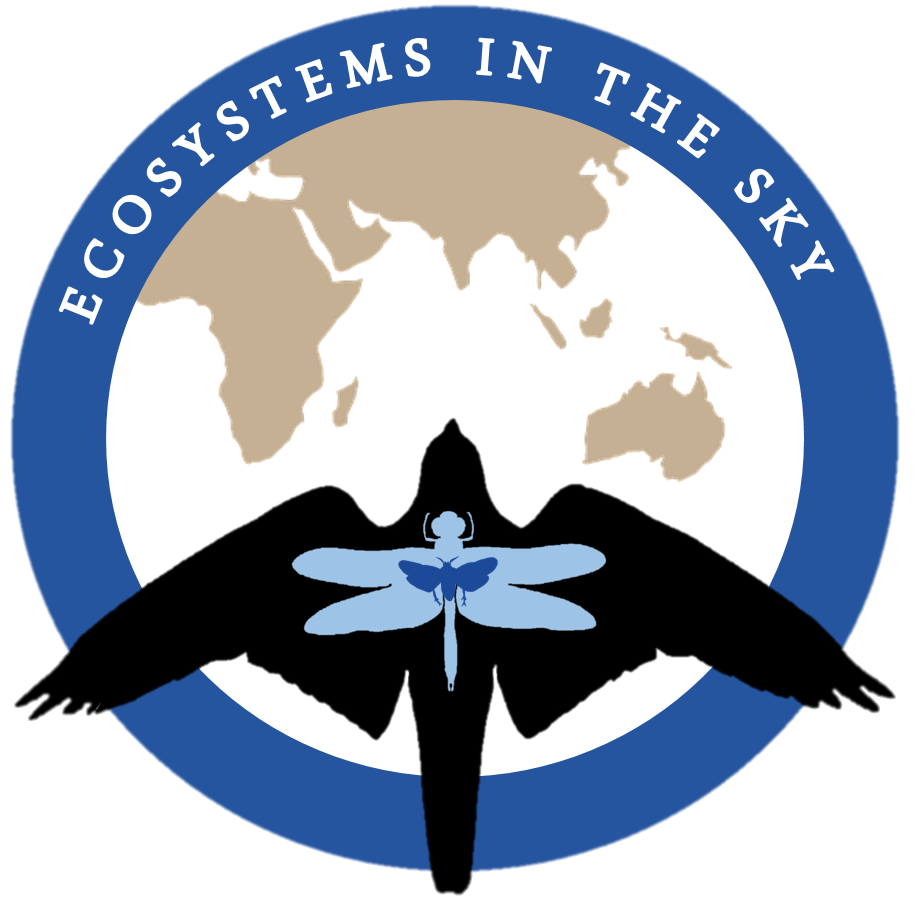Pantala flavescens
The globe skimmer is most famous for its incredible migrations, forming enormous swarms and travelling hundreds of kilometres.
Description
The globe skimmer, or wandering glider, is a small reddish-yellow dragonfly in the family Libellulidae. Libellulidae is the family among dragonflies that includes the most species in the world and the most migratory species. It contains migratory genus such as Sympetrum, Libellula, Tramea and Pantala. The globe skimmer has one sister species in Pantala, the spot-winged glider (Pantala hymenea).
The globe skimmer is quite small, measuring about 45 mm and reaching wingspans between 72 - 84 mm. It weighs around 320 mg (0.32 g), which is less than half of one of the world’s larger dragonflies, the green darner (Anax junius), that can reach 1200 mg.
The male and female are very similar, both being yellowish to red in colour with clear wings and darker markings. However, sexually mature males tend to be more red on the abdomen than females, and to have darker pterostigmas (the coloured patch on the wing tips). Females may also have a larger, yellow stain on the base of their hindwings than males
Male wing to the left, female wing to the right
Male globe skimmer
Female globe skimmer
DISTRIBUTION
The globe skimmer can be found on most continents. It is also one of the few dragonflies that often cross vast bodies of water, and thus it is not uncommon to find it on remote islands. For example, it has been spotted on the Azores, the Ngulu atoll, Amsterdam island and it has even established a population on Easter Island in the Pacific Ocean. Occasionally, the globe skimmer is spotted even in Europe. In 2013 it was found amongst other migrating dragonflies in an ornithological Rybachy-type trap in Kaliningrad, Russia, on the Baltic Sea. In 1989 it was spotted in Kent, southwestern UK, and across the Mediterranean, it is quite frequently recorded, especially in Cyprus.
World distribution and sightings of globe skimmers. Light green denotes areas where it occurs but is less common
Sightings of globe skimmers in Europe (map modified from Buczyński et al 2016). The red dot denotes the first ever confirmed breeding in Europe (read more about it here)
Reproduction
When dragonflies mate, they can be seen flying in tandem, holding on to each other. The male has clasps at the tip of is long abdomen, which he holds on to the female’s head with. The female brings forward her abdomen, connecting with the male and mating. As is common among dragonflies belonging to the Libellulidae family, there is no courtship ritual between the male and female globe skimmer, and both sexes may mate several times.
The female lays a clutch of eggs in ephemeral pools of water, such as those puddles and pools created by heavy rain during monsoon rainfalls. There is about 500 to 2000 eggs in one clutch and when the larva (nymph) has hatched, it develops fast. In most dragonflies, an individual spend most of its lifetime as a nymph, sometimes as long as 2 years. But since globe skimmers have adapted to lay eggs in pools of water that are created temporarily and that may dry out, the nymph develops rapidly and emerges as an adult within 38 to 65 days.
Migration
The globe skimmer is known for its migratory behaviour. The English common names "wandering glider" and "globe skimmer" refer to its migratory behaviour, and in German it is even more straightforward: Wanderlibelle meaning "migrant dragonfly". As the globe skimmer has been observed to arrive in connection with seasonal rain in Hong Kong, it is called “typhoon dragonfly” there, and on the Maldives, where it appears with the southwestward winds in October, they call it Hei nakaiy dhooni, “October flyer”.
Unlike most other dragonflies, that appear to avoid crossing large bodies of water, the globe skimmer has been sighted on very remote islands. On the Easter Island in the Pacific Ocean, located more than 3512 km from the closest landmass, it has even established a resident population, that refrains from migrating.
Even though studies into insect migration is gaining momentum, still little is known about the flyways used by dragonflies. The most well-studied, and hence best known dragonfly migration, is that of the green darner (Anax junius) thorugh continental US. In 2-3- generations, green darners from southern US and central America makes a round-trip journey through northern US and Canada, and back south. Together with the green darner, migratory swarms in the US have been seen accompanied by globe skimmers, as well as other migratory dragonflies, such as black saddlebags (Tramea lacerata), spot-winged gliders (Pantala hymenea), and variegated meadowhawks (Sympetrum corruptum). The generation system and the routes the globe skimmers take in the US are nevertheless less known than those of the green darner.
The Indian Ocean Flyway is another example of a migratory route that appears to be used by the globe skimmer, but that remains unexplored. Currently, what we know about this flyway is that globe skimmers aggregate in huge numbers on the Indian sub-continent, then seem to disappear, only to re-appear on the Maldives and then on the Seychelles. Following this apparent movement southwestward, the monsoon rains of East and South Africa starts and globe skimmers on this continent aggregate in huge numbers. Isotopic analysis of globe skimmers arriving on the Maldives show that they were hatched in an environment corresponding to that of north-eastern India or even further east. Thus, the hypothesis formulated by the researcher on the Maldives, who first reported on this dragonfly movement over the Indian Ocean, is that the globe skimmer conducts a multi-generational, transoceanic migratory circuit.
Learn more about research on the Indian Ocean Flyway here:
Below is a clip of a talk by Charles Anderson, the marine biologist on the Maldives, that first described the hypothesis that the globe skimmer is migrating between India and East Africa, and back!












